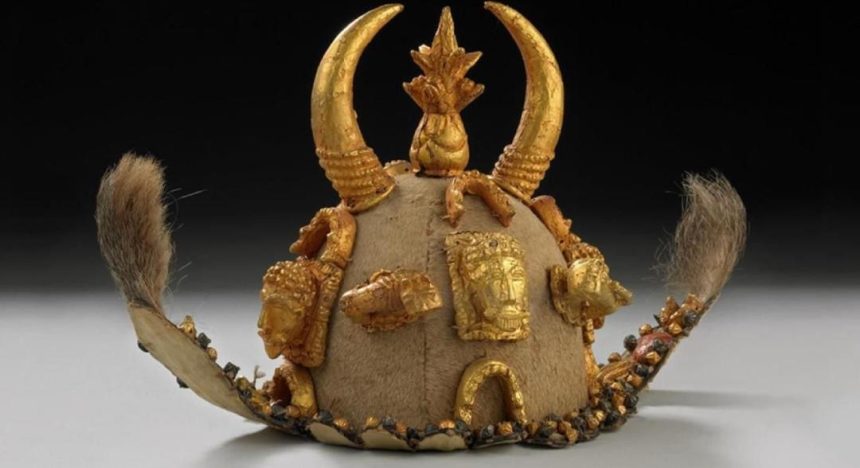Asantehene, Otumfuo Osei Tutu II, has received more than 130 gold and bronze artefacts from Britain and South Africa in a historic restitution ceremony at the Manhyia Palace in Kumasi. The returned objects, some dating back over a century, include royal regalia, ceremonial gold weights, drums, and ornaments that once symbolised the wealth, power, and spiritual authority of the Asante Kingdom.
The artefacts were originally taken from Ghana during the 19th- and early 20th-century colonial campaigns, particularly during the British invasion of Kumasi in 1874 and the 1900 War of the Golden Stool. Others had been held in private or institutional collections abroad for decades. Their return marks one of the most significant acts of cultural repatriation in Ghana’s modern history.
At the ceremony, Otumfuo Osei Tutu II described the gesture as an act of goodwill and reconciliation, praising those who voluntarily returned the items. He commended British art historian Hermione Waterfield and the mining company AngloGold Ashanti for their roles in facilitating the process. Although the company had legally acquired some of the artefacts on the open market, it decided to return them to the Asante Kingdom as a symbolic recognition of heritage and history.
The Asantehene said the return of the artefacts restores not only valuable historical objects but also part of the kingdom’s soul. “These treasures are more than art; they embody the spirit and dignity of our ancestors. Their return is a homecoming,” he said.
Officials at the Manhyia Palace Museum, which will house the returned pieces, said the items include ceremonial swords, gold jewellery, silver and bronze ornaments, traditional stools, and drums believed to have been used in royal rituals. Many had been part of European private collections and museums for decades, with some circulating in the art market since the early 1900s.
The event drew traditional leaders, cultural advocates, government officials, and international diplomats. It comes at a time when global conversations around restitution and the return of looted cultural property are gaining momentum. The return of these artefacts to Ghana adds to similar efforts by other African nations, including Nigeria, Benin, and Ethiopia, to recover heritage items taken during the colonial era.
Cultural historians say the gesture has profound implications beyond symbolism. For the Asante people, these artefacts represent tangible connections to their history, identity, and spirituality. The items are expected to be displayed at the Manhyia Palace Museum, where they will be accessible to scholars, students, and the general public. Palace officials say the goal is to make the museum a hub for cultural education and a reminder of the Asante Empire’s resilience and sophistication.
The restitution also strengthens Ghana’s cultural diplomacy, reflecting a new era of cooperation between Western institutions and African nations. It signals a willingness by museums, private collectors, and corporations to address historical wrongs and engage in restorative justice through voluntary returns.
As the artefacts were unveiled, traditional drumming and dancing filled the palace courtyard. The moment carried deep emotion for many present, symbolising a long-awaited return of cultural treasures to their rightful home. For the Asante Kingdom, it was not just about reclaiming art but reclaiming memory, dignity, and the enduring legacy of a people whose history continues to shape Ghana’s identity today.






